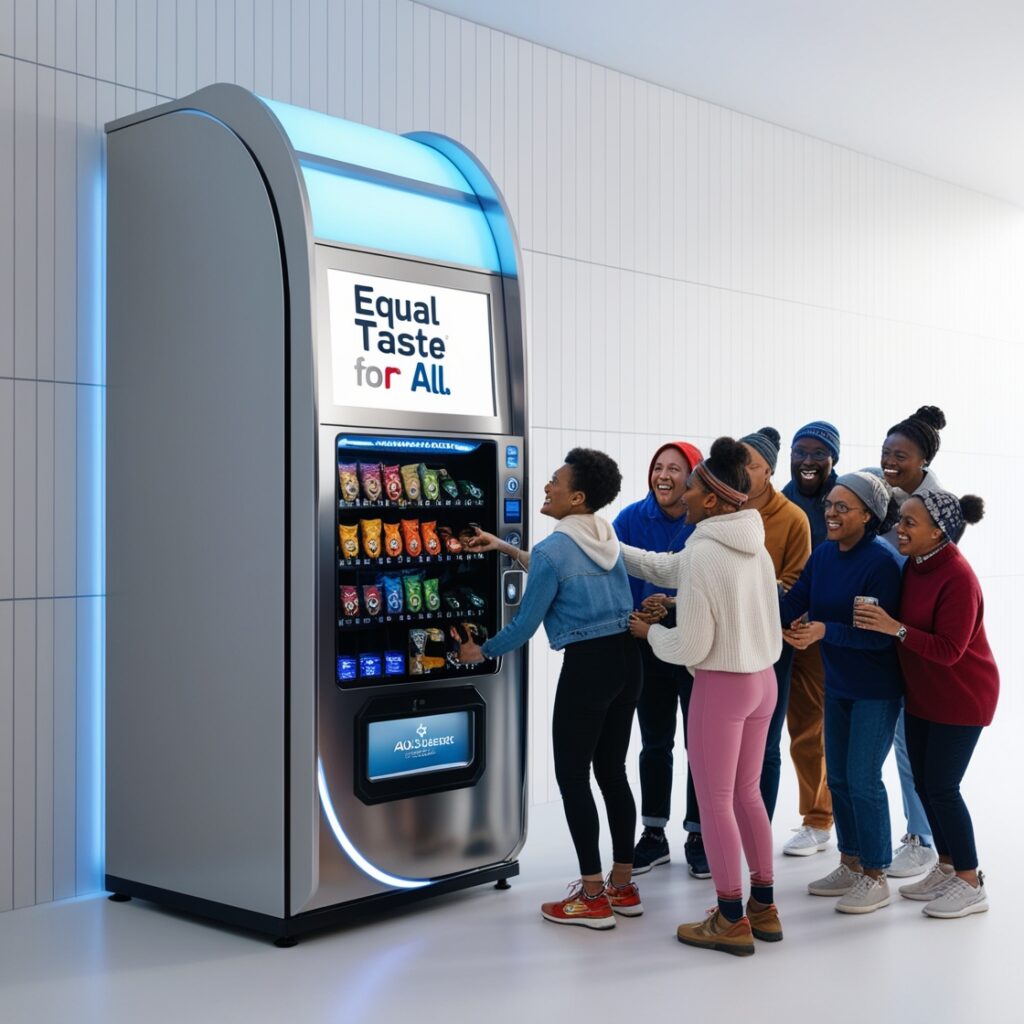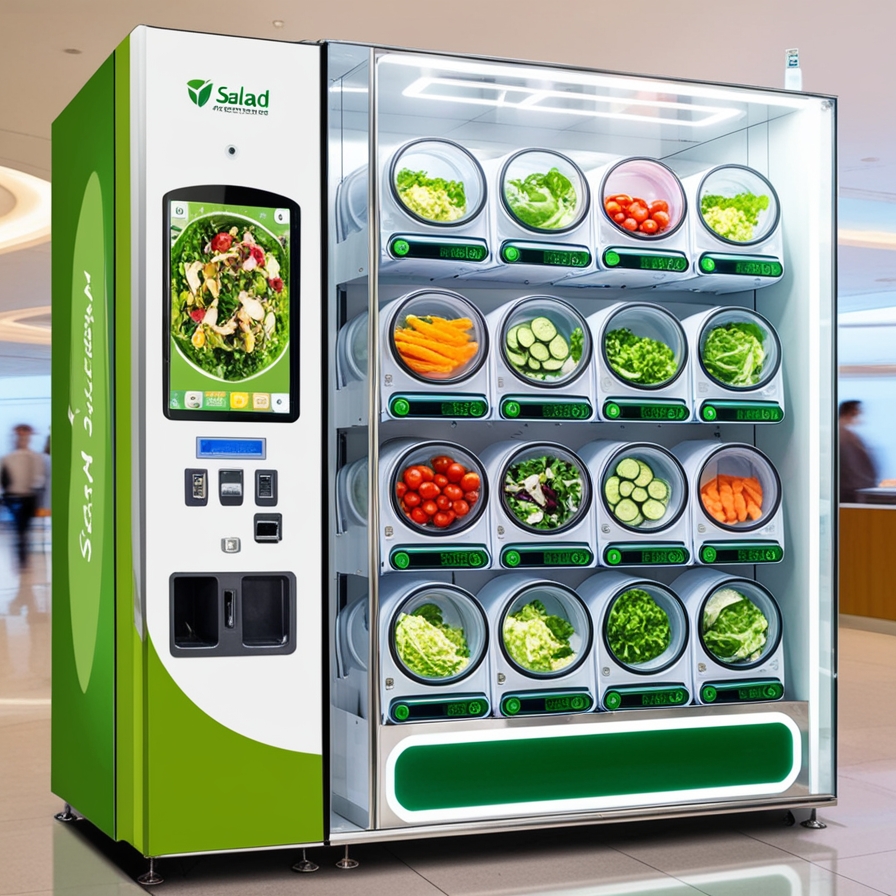Ensuring Accessibility in Vending Services
Since the enactment of the Americans with Disabilities Act (ADA) in 1990, businesses across the United States have been legally required to eliminate barriers and prevent discrimination against individuals with disabilities.
This transformative legislation, enforced by the Department of Justice (DOJ) and the Department of Transportation (DOT), covers a broad range of public and private entities that provide services to the public.
ADA guidelines not only foster inclusivity but also ensure that services are accessible to everyone, regardless of their physical capabilities.
For vending machine operators, this means reevaluating machine design, placement, and functionality to meet ADA standards.
This article delves into the significance of ADA compliance within the vending industry and describes the features and benefits of ADA-compliant vending machines.
We will also discuss the potential penalties for non-compliance and how embracing these regulations can enhance customer satisfaction and expand market reach.
Do Your Vending Machines Have to Be ADA Compliant?
Federal ADA regulations are not universally applicable to all vending machine operators, but understanding compliance is straightforward.
Vending machines that are permanently installed—bolted to a building’s floor or walls—must adhere to ADA standards. Non-compliance can lead to substantial penalties, including monetary damages awarded to affected individuals.
However, if a vending machine is not permanently fixed, it generally falls outside the ADA’s scope concerning public accommodations. In such cases, operators are not mandated to ensure accessibility for people with disabilities.
The requirement to comply with ADA standards applies universally across various public settings. This includes locations like hospitals, schools, airports, eateries, retail spaces, hotels, banks, and shopping malls.
For operators managing multiple machines in one location, ADA compliance is required for at least one machine of each type—be it snack, drink, food, or coffee.
Nevertheless, the ADA does offer some leniency through safe harbor rules. Existing machines are exempt from ADA upgrades unless they are moved, the building undergoes renovations, or the machines themselves are upgraded.
Federal Regulations for ADA-Compliant Vending Machines
Understanding the specific ADA guidelines for vending machines is crucial once you determine the need for compliance. ADA regulations cater to all types of disabilities, but when it comes to vending machines, the focus is primarily on accessibility for wheelchair users.
To be considered ADA-compliant, vending machines must fulfill two main criteria: accessible height and reach range.
What Is ADA Height for Vending Machines?
For a vending machine to meet ADA standards, the height of all operational components is critical. These components include the selection buttons, payment mechanisms (such as coin slots and card readers), and the area where items are dispensed. To comply, these must be positioned no lower than 15.99 inches and no higher than 48.99 inches from the floor.

This height range ensures that all users, particularly those in wheelchairs, can comfortably access the machine without assistance. Compliance not only enhances user experience but also broadens your customer base to include people with disabilities, reflecting a commitment to inclusivity and equal access.
What Is ADA Accessible Range?
The ADA defines “accessible range” as a specification that ensures vending machines are usable by everyone, including those in wheelchairs. There are two main components to this:
- Vertical Reach: All operational components of the vending machine, such as buttons and card readers, must be within a vertical range of 15 to 48 inches from the ground.
- Proximity for Maneuverability: Individuals in wheelchairs should be able to approach within 10 inches of the vending machine. This close proximity allows easy access to controls and retrieval of items without strain.
Who Is Responsible for Ensuring ADA Compliance?
Determining who is responsible for ADA compliance—whether it’s the vending machine manufacturer or the operator—can be confusing. The type of installation influences the need for compliance:
- Manufacturers: There is no requirement for manufacturers to ensure that their machines are ADA compliant, as compliance depends on how the machine is installed (secured or freestanding).
- Operators: If the vending machine is to be permanently installed or bolted down, the operator must ensure it meets ADA standards. Operators are liable for any non-compliance penalties if the machine does not meet ADA guidelines once installed.
Navigating ADA Standards
Height and Reach: Ensuring Accessible Use
Ensuring your vending machines are accessible to everyone is not just about legal compliance; it’s about facilitating ease of use and inclusivity.
The ADA standards set specific requirements for the height and reach of vending machines to ensure that all users, particularly those with mobility challenges, can access them without assistance.
Key ADA Requirements:
-
- Height Accessibility: All operational components of the vending machine, such as the selection keypad, payment systems, and product retrieval areas, must be within the reach range of all users. This range is specifically defined as no lower than 15 inches and no higher than 48 inches from the ground. This regulation helps ensure that individuals in wheelchairs can easily interact with the machine.
- Reach Accessibility: It’s crucial that the design of the vending machine allows users to approach within 10 inches of the service components. This proximity enables individuals who use mobility aids to access the machine without the need for additional help or significant physical effort.
Adhering to these height and reach guidelines not only complies with the ADA but significantly enhances the user experience for a considerable segment of the population. By implementing these standards, vending machine operators can ensure their machines are truly accessible to all customers, reflecting a commitment to diversity and equality in service provision.
Responsibilities and Compliance
Ensuring Your Machines Meet Standards
- Meeting ADA standards for vending machines is not only a legal requirement but also a moral obligation to ensure accessibility for all users. Understanding who is responsible and what steps to take is crucial for compliance.
Operator Responsibilities:
-
- Assessment and Modification: Vending machine operators must regularly assess their machines for ADA compliance. This includes checking the height and reach specifications. If machines are not compliant, operators must plan and execute necessary modifications.
- Installation and Placement: Proper installation is critical. Machines should be installed in locations that are easily accessible to individuals with disabilities. This might mean adjusting the layout of the space to avoid obstacles that could hinder access.
- Regular Updates: Keeping up with changes in ADA regulations is essential. Operators should stay informed about updates to ensure ongoing compliance.
Compliance Steps:
- Conduct an Accessibility Audit: Evaluate all vending machines and their locations for potential accessibility issues. This can be done through internal checks or by hiring accessibility consultants.
- Implement Modifications: Based on the audit, make the required adjustments to the machines and their surroundings. This may involve lowering the machines, adjusting the reachability of controls, or relocating machines to more accessible areas.
- Train Staff: Ensure that all employees are aware of ADA requirements and understand how to maintain the machines to meet these standards. Training should also cover how to assist customers with disabilities effectively.
- Document Compliance Efforts: Keep detailed records of all compliance efforts, including audits, modifications, and staff training. This documentation can be important in demonstrating compliance in case of ADA inspections or complaints.
By adhering to these responsibilities and steps, vending machine operators not only ensure compliance but also foster an inclusive environment. Such proactive measures enhance the service experience for all users and protect the business from potential legal issues.
The Benefits of Compliance
Beyond Legal Requirements: The Business Case for Accessibility
While meeting ADA standards is a legal mandate, there are significant business benefits to ensuring your vending machines are accessible to all customers.
Accessibility increases your potential customer base to include individuals with disabilities, who represent a substantial market segment.

By accommodating all users, you not only comply with the law but also broaden your reach and tap into new revenue streams.
Moreover, showing commitment to inclusivity can significantly enhance your brand’s reputation, fostering loyalty among customers who value ethical and socially responsible businesses.
How ADA Compliance Can Enhance Customer Experience
-
- Inclusivity Enhances Brand Perception: When customers see that your vending machines are accessible to everyone, it sends a value able message about your brand’s values. This commitment to inclusivity can strengthen your brand’s reputation and attract customers who prioritize equality and social responsibility.
- Ease of Use Attracts Repeat Business: ADA-compliant machines are designed to be user-friendly for all, including those with limited mobility or other disabilities. Features like lower height settings and easily reachable controls ensure that everyone can use the machines with ease, enhancing the overall customer experience and encouraging repeat business.
- Positive Public Relations: Compliance with ADA guidelines can lead to positive public relations. Businesses often receive recognition for their efforts in making their services accessible, which can be promoted in marketing materials and through media channels, further enhancing the business’s image.
- Avoidance of Legal Consequences: While enhancing customer experience, compliance also avoids the costly legal consequences of non-compliance. Businesses that adhere to ADA standards protect themselves against potential lawsuits and fines, ensuring financial stability and a positive public image.
At The End
Ensuring your vending machines comply with the Americans with Disabilities Act (ADA) is essential, regardless of whether they are placed in public or private locations.
Compliance is necessary not only for machines initially manufactured to meet ADA standards but also for older units, especially if they are accessible to the public or employees with disabilities.
Adhering to ADA guidelines does more than just broaden the user base—it significantly boosts the machine’s profitability.
More importantly, it enhances the vending operator’s reputation by demonstrating a commitment to inclusivity and equal access.
Ultimately, ADA compliance is not just about adhering to legal requirements; it’s about ensuring fairness and accessibility, which benefits everyone in the community.



